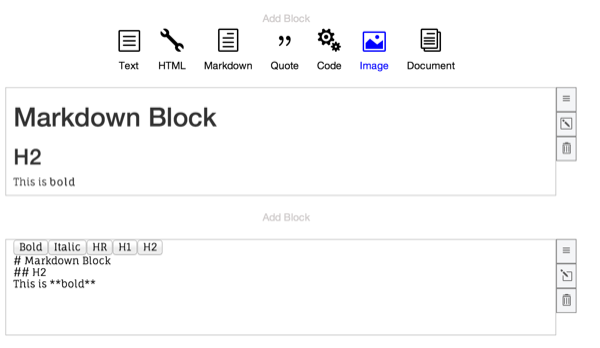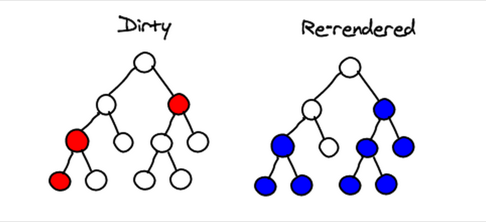It's exciting to see the number of real-world React applications and components skyrocket over the past months! This community round-up features a few examples of inspiring React applications and components.
React in the Real World #
Facebook Lookback video editor #
Large parts of Facebook's web frontend are already powered by React. The recently released Facebook Lookback video and its corresponding editor are great examples of a complex, real-world React app.
Russia's largest bank is now powered by React #
Sberbank, Russia's largest bank, recently switched large parts of their site to use React, as detailed in this post by Vyacheslav Slinko.
Relato #
Relato by Ben Ripkens shows Open Source Statistics based on npm data. It features a filterable and sortable table built in React. Check it out – it's super fast!
Makona Editor #
John Lynch (@johnrlynch) created Makona, a block-style document editor for the web. Blocks of different content types comprise documents, authored using plain markup. At the switch of a toggle, block contents are then rendered on the page. While not quite a WYSIWYG editor, Makona uses plain textareas for input. This makes it compatible with a wider range of platforms than traditional rich text editors.

Create Chrome extensions using React #
React is in no way limited to just web pages. Brandon Tilley (@BinaryMuse) just released a detailed walk-through of how he built his Chrome extension "Fast Tab Switcher" using React.
Twitter Streaming Client #
Javier Aguirre (@javaguirre) put together a simple twitter streaming client using node, socket.io and React.
Sproutsheet #
Sproutsheet is a gardening calendar. You can use it to track certain events that happen in the life of your plants. It's currently in beta and supports localStorage, and data/image import and export.
Instant Domain Search #
Instant Domain Search also uses React. It sure is instant!
SVG-based graphical node editor #
NoFlo and Meemoo developer Forresto Oliphant built an awesome SVG-based node editor in React.

Ultimate Tic-Tac-Toe Game in React #
Rafał Cieślak (@Ravicious) wrote a React version of Ultimate Tic Tac Toe. Find the source here.
ReactJS Gallery #
Emanuele Rampichini's ReactJS Gallery is a cool demo app that shows fullscreen images from a folder on the server. If the folder content changes, the gallery app updates via websockets.
Emanuele shared this awesome demo video with us:
React Components #
Table Sorter #
Table Sorter by bgerm [source] is another helpful React component.
Static-search #
Dmitry Chestnykh @dchest wrote a static search indexer in Go, along with a React-based web front-end that consumes search result via JSON.
Lorem Ipsum component #
Martin Andert created react-lorem-component, a simple component for all your placeholding needs.
Input with placeholder shim #
react-input=placeholder by enigma-io is a small wrapper around React.DOM.input that shims in placeholder functionality for browsers that don't natively support it.
diContainer #
dicontainer provides a dependency container that lets you inject Angular-style providers and services as simple React.js Mixins.
React server rendering #
Ever wonder how to pre-render React components on the server? react-server-example by Michael Hart (@hichaelmart) walks through the necessary steps.
Similarly, Alan deLevie (@adelevie) created react-client-server-starter, another detailed walk-through of how to server-render your app.
Random Tweet #
Recent changes: web ui is being upgraded to [#reactjs](https://twitter.com/search?q=%23reactjs&src=hash), HEAD~4 at [https://camlistore.googlesource.com/camlistore/](https://camlistore.googlesource.com/camlistore/)
— Camlistore (@Camlistore) January 16, 2014
